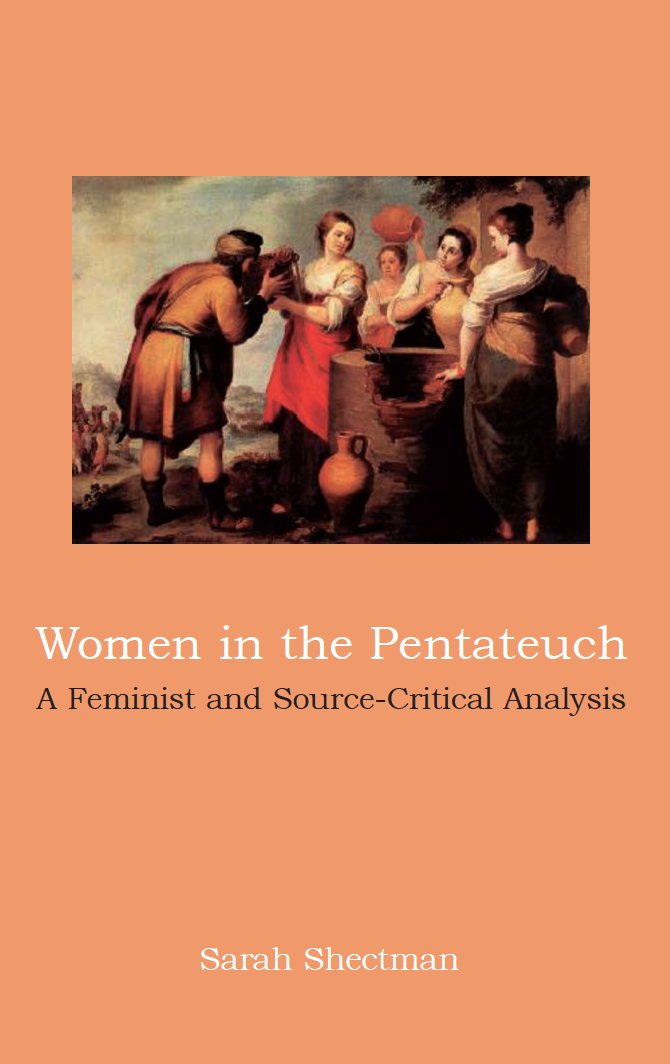Women in the Pentateuch: A Feminist and Source-Critical Analysis
£50.00
For the first time, literary source criticism and feminist biblical interpretation are here brought together systematically.
For the first time, literary source criticism and feminist biblical interpretation are here brought together systematically. Taking into account recent trends in Pentateuchal source criticism, Shectman divides the narrative into priestly and non-priestly threads, tracing the portrayal of women in each. In both sources, as Moses comes to the fore, women recede increasingly into the background, with the result that far fewer women appear in Exodus —Numbers than appear in Genesis.
A stark contrast between the sources also emerges from this study: non-P contains many more fully developed narrative traditions focused on women, particularly those involving childbirth, pointing to an original genre of narratives unique to biblical women. However, with the combination of traditions in the Pentateuch, these traditions are absorbed into the patriarchal ones, culminating in Genesis 17, P’s programmatic statement of the promise and covenant. P significantly limits the roles of women that were preserved in non-P. This difference between the sources is primarily the result of increased centralization: whereas the non-P material reflects a period before centralization had become entrenched, in P, centralization has taken hold, with the result that women’s roles are more limited.
In addition to a new and detailed source-critical analysis of women in the Pentateuch, this book also provides a detailed overview of feminist biblical criticism, from the work of Elizabeth Cady Stanton up to the present, which will be useful for those interested in the history of biblical, particularly feminist, interpretation.
Additional information
| table of contents | 1. FEMINIST STUDY OF PENTATEUCHAL NARRATIVE 1. An Overview of Feminist Biblical Scholarship Feminist Theological Criticism Feminist Historians Feminist Literary Critics What about Men? Feminism and Historical-Critical Method 2. Conclusions 2. THE MATRIARCHS OUTSIDE THE PRIESTLY CORPUS 1. Introduction 2. The Matriarchal Childbirth Narratives Promises to the Patriarchs The Question of Deuteronomic Editing of the Promises The Promises to Hagar The Matriarchal Childbirth Traditions Texts outside Genesis The Combination of the Traditions Conclusions 3. Wife-Sister Stories 4. Genealogical Material 5. Other Material on Sarah 6. Rebekah 7. Rachel and Leah 8. Conclusions 3. OTHER WOMEN OUTSIDE THE PRIESTLY CORPUS 1. Women in the Primeval History Eve Other Women in the Primeval History 2. Other Women in the Ancestral History Lot’s Wife and Daughters Keturah Dinah Deborah 3. Women in the Joseph Cycle Tamar Potiphar’s Wife Asenath 4. Women in Exodus and Numbers Exodus 1:15–2:10 Zipporah Miriam Numbers 25:1-5 5. Conclusions 4. WOMEN IN P’S GENESIS 1. Genealogical Material Genesis 5 Genesis 11 Genesis 12 Genesis 25 Genesis 35 Genesis 36 Genesis 46 2. Narrative Material Genesis 1:1–2:4a Genesis 6–9 Genesis 16 Genesis 17 Genesis 21:1-5 Genesis 23 (and 49:31) Genesis 26:34-35; Genesis 27:46–28:9 Genesis 48:7 3. Conclusions 5. WOMEN IN P’S EXODUS–NUMBERS 1. Genealogical Material Exodus 6:14-25 Numbers 20:1 Numbers 26:46 Numbers 26:59 2. Narrative Material Exodus 35:20–36:7 Exodus 38:8 Leviticus 24:10-16, 23 Numbers 25:6-18 Numbers 26:33; 27:1-11; 36:1-12 Numbers 31 3. Women in the Priestly Laws 4. Conclusions |
|---|


Suzanne Boorer, Review of Biblical Literature. –
Shectman has identified a gap in pentateuchal scholarship and in addressing this makes a valuable contribution both in the area of methodology and with regard to interpretation of pentateuchal texts. Her summary of the history of interpretation is clear and concise; she captures the nuances of various positions and the fluidity within the debates, especially surrounding source criticism, in a constructive way; and her summing up of the views of feminist critics is enlightening. She carefully defines her method and its parameters and does not claim more than what is possible within these. Her discussion of texts is well-balanced, skillful, and to the point. The feminist perspective Shectman brings is down to earth, and she is careful to steer clear of emotive judgments, which is perhaps a reflection of a later stage of feminism, in a younger generation, with a different perspective and motivation from earlier feminists such as P. Trible. Particularly helpful is her approach of taking into account the primary purpose of the text when describing the depiction and role of women within it.